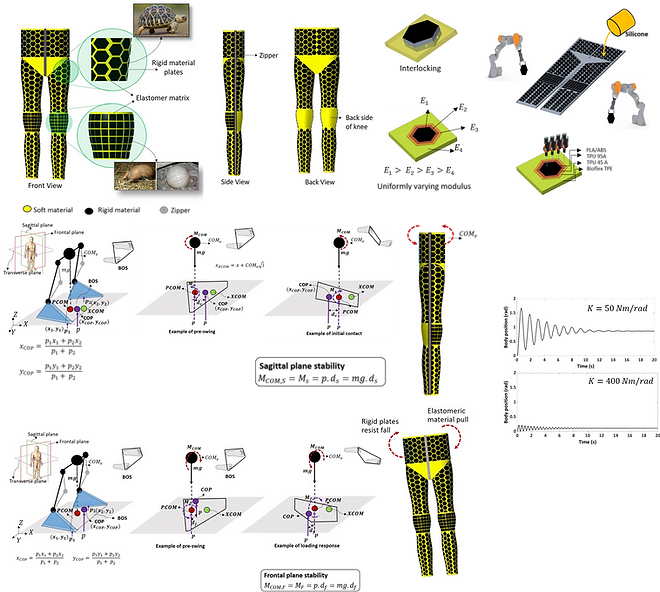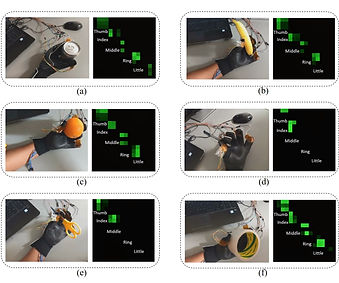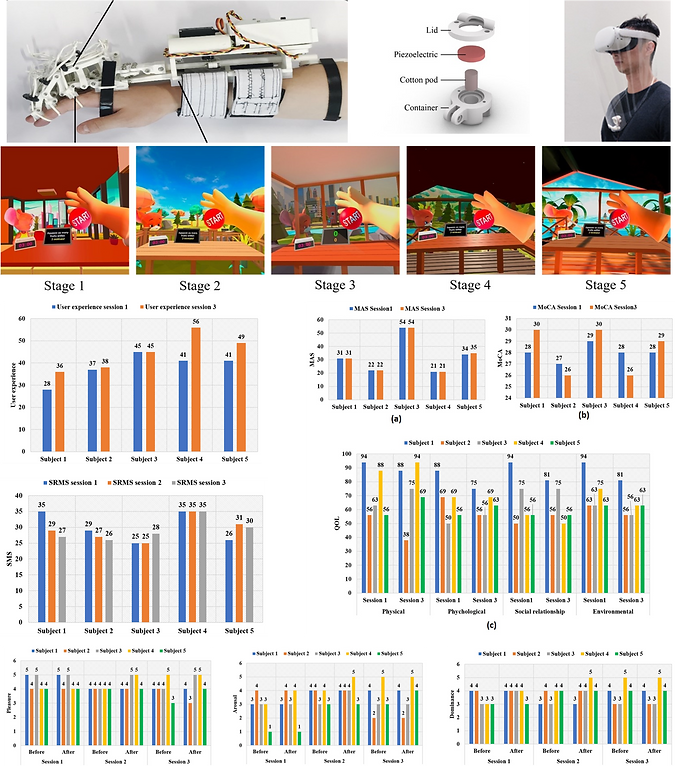Dr. Anoop Kumar Sinha
Postdoctoral Researcher, ETH Zurich - Singapore ETH Centre, Singapore
Roboticist | Mechatronics | Inventor | Researcher
PhD - Robotics and Mechatronics @ NTU Singapore
M.Tech - Mechatronics @ Indian Institute of Technology (IIT), Patna India

Research
Most of my research projects are related to Robotics and Mechatronics.
Enhancing mobility: a bio-inspired soft exosuit for elderly individuals with weak muscle strength
July 2023–Present
Highlights:
– Mathematical modeling of the gait cycle and center of mass movement of the elderly with medical conditions such as sarcopenia and dynapenia.
– Designed a novel bio-inspired lower limb exosuit involving the concept of function sharing from the biological world to enhance muscle strength, joint stiffness, and prevent falls by reducing large center of mass displacement.
– Analyzed the exosuit performance under perturbation. This indicates that the overall upper body displacement of the elderly wearing the exosuit is less than 12 degrees, thereby preventing falls.
Abstract:
Age-related loss of muscle mass (sarcopenia) and age-related decline in muscle strength (dynapenia) are serious medical conditions that result in falls and fractures in the elderly. Weak leg muscles (skeletal muscle weakness) can make it difficult to walk or stand, potentially affecting the stability of the elderly during walking. In this research, a novel bio-inspired exosuit has been proposed to enhance the muscle strength and joint stiffness of the elderly. The exosuit combines structure and functions inspired from the biological world in its product architecture. The effectiveness of the exosuit was analyzed under perturbations introduced by inappropriate foot placement on the ground. Results indicate that the exosuit is effective in preventing the elderly from falling, as the overall maximum angular displacement of the upper body of the elderly wearers of the exosuit was reduced to only 12 degrees. Future research in this direction will involve developing multiple exosuit designs to address various age-related conditions in the elderly.

Skin-inspired multi-point fingertip sensor for smart glove
Oct 2021–Jan 2022
Singapore provisional patent application number 10202204103R, PCT application
number PCT/SG2023/050263, International filing date: 19 April 2023
Highlights:
– Multi-point fingertip sensors were fabricated using aerosol jet 3D printing.
– Sensors were characterized. Results indicate response faster than human skin (≈ 10 ms), high sensitivity, and ultra low hysteresis.
– Deep learning is used to identify the objects and direction of touch.
(Work published in Wiley Advanced Materials Interfaces. Impact factor 6.147)
Abstract:
Skin-inspired sensors are all the rage in robotic applications. They take inspiration from the human skin's sensory abilities and use their abilities to sense things like temperature and pressure. Herein, fabrication of ultra-low-cost (<$1.5), ultra-thin, wide range, and crosstalk-free skin-inspired tactile sensors is presented. The sensors consist of piezoresistive pressure sensing elements sandwiched between 3D printed silver nanoparticle electrodes on polyimide layers just like the epidermis, dermis, and hypodermis of human skin. The response time of individual sensing nodes is 4 ms which is faster than the response time of the human skin (30–50 ms). The sensors exhibit high sensitivity (1.35 kPa−1), low hysteresis (9.22%), and a wide pressure sensing range (5–600 kPa). The sensor arrays are assembled on the fingertips of a commercial glove to make a smart glove. By combining the sensor information and deep learning, the smart glove is used to identify sharp and blunt objects with a classification accuracy of 95.9% and the direction of applied pressure when touched by an object with a classification accuracy of 97.8%. Furthermore, the smart glove is used to generate pressure maps in real-time while grabbing six different objects handled by humans in daily life.



Multimodal sensing palmtop with 390 tactile sensing nodes and 5 hydration sensing nodes
Jan 2022 - Mar 2022
Highlights:
– A novel design and a method for fabrication of a palmtop with 390 tactile pressure sensing nodes and 5 hydration sensing nodes was developed using aerosol jet 3D printing of Ag nanoparticles. The overall fabrication cost of the palmtop is <$10 and the overall fabrication time of the palmtop is around 6 hrs.
– The multi-modal sensing palmtop is then used to identify and classify different objects objects.
(Manuscript in preparation for submission in Wiley small. Impact factor 15.15)
Coming soon!!
NTU-IMI Nadine hand-arm system and a tool for measuring anthropomorphism
Sep 2019–Aug 2020
Highlights:
– A new humanoid robot hand-arm system was designed and developed to enhance dexterous manipulation of our social humanoid Nadine.
– A novel method to measure functional anthropomorphism of robotic hand-arm systems is proposed.
The proposed method was used to quantify the anthropomorphism of the humanoid robot hand-arm
system and compared with those of the other humanoid hand-arm systems.
(Work published in Springer Nature International Journal of Social Robotics. Impact factor 4.31)
Abstract:
Existing perceptional and analytical techniques for quantifying anthropomorphism of robotic hand-arm systems have significant limitations. The former is based on subjective appraisals by human observers, which are prone to biases. The latter frequently disregards the manipulability of the robotic hand-arm system leading to potentially flawed estimation of anthropomorphism. Additionally, prior methodologies have predominantly focused on assessing anthropomorphism of robotic hands while paying scant attention to that of robotic arms. In this paper, we propose an analytical method to quantify the functional anthropomorphism of robotic hand-arm systems. In this method, relative workspace coverage and manipulability of the robot arm and fingers are compared with those of the human arm and fingers. The proposed methodology is then used to quantify functional anthropomorphism of several hand-arm systems, including our new full-scale humanoid robot hand-arm system, the iCub hand-arm system, and robot arms such as Atlas, H20, and Hubo2+/Sophia, as well as robot hands like Shadow, DEXMART, and SEOULTECH. Our new robot hand-arm system has a functional anthropomorphism of 23.31%, while iCub’s is 35.96%. Atlas, H20, and Hubo2+/Sophia robot arm have functional anthropomorphism of 24.79%, 12.82%, and 29.64%, respectively, while Shadow, DEXMART, and SEOULTECH robot hands have functional anthropomorphism of 36.96%, 48.91%, and 25.33%, respectively. The proposed method is an effective tool for designers to quantitatively compare the human-likeness of both new and existing robotic hand-arm systems and identify possible improvements in the design. We further conducted a series of kinematic experiments to ascertain the kinematic capabilities of our humanoid robot hand-arm system.




MIDAS: Multi-sensorial Immersive Dynamic Autonomous System to improves motivation of stroke affected patients for hand rehabilitation
Sep 2020–Jan 2021
Highlights:
– Current rehabilitation devices have failed to motivate the patients enough to continue rehabilitation exercises.
– MIDAS is intended for stroke patients who suffer from light to mild stroke. MIDAS is lightweight and portable. It consists of a hand exoskeleton subsystem, a Virtual Reality (VR) subsystem, and an olfactory subsystem. Altogether, MIDAS engages four out of five senses during rehabilitation.
– In our pilot study it was found that 60% of the scores of user experience are above 40 (out of 56). 96% Self Rehabilitation Motivation Scale (SRMS) rating shows that the participants are motivated to use MIDAS and 87% rating shows that MIDAS is exciting for rehabilitation.
(Preprint available at arXiv.)
Abstract:
Majority of stroke survivors are left with poorly functioning paretic hands. Current rehabilitation devices have been unable to motivate patients sufficiently enough to continue rehabilitation exercises. The objective of this project, MIDAS (Multi-sensorial Immersive Dynamic Autonomous System) is a proof of concept by using an immersive system to improve motivation of stroke patients for hand rehabilitation. MIDAS is intended for stroke patients who suffer from light to mild stroke. MIDAS is lightweight and portable. It consists of a hand exoskeleton subsystem, a Virtual Reality (VR) sub-system, and an olfactory subsystem. Altogether, MIDAS engages four out of five senses during rehabilitation. To evaluate efficacy of MIDAS a pilot study consisting of three sessions is carried out on five stroke affected patients. Subsystems of MIDAS are added progressively in each session. The game environment, sonic effects, and scent released is carefully chosen to enhance immersive experience. 60% of the scores of user experience are above 40 (out of 56). 96% Self Rehabilitation Motivation Scale (SRMS) rating shows that the participants are motivated to use MIDAS and 87% rating shows that MIDAS is exciting for rehabilitation. Participants experienced elevated motivation to continue stroke rehabilitation using MIDAS and no undesired side effects were reported.


Biaxial stretching device for dielectric elastomers
Jul 2016-Aug 2017
Indian Patent No. 345777
Highlights:
– Developed an automatic setup capable of providing uniaxial, equibiaxial, and unequibiaxial stretching of Dielectric Elastomers (DEs) at controlled stretching rate.
–After stretching, DEs are used to make sensors, actuators, and generators with improved performance.
(Patent granted.)
Abstract:
The present invention provides an apparatus for stretching and a method of stretching. The apparatus for stretching a membrane comprising at least one stretching mechanism, at least one drive system, and a control system connected to the drive system for controlling the revolutions per minute (rpm) of motors of the drive system to provide stretching of the membrane clamped to the stretching mechanism.

An apparatus and method for cryogenic micromachining of soft materials
Sep 2017–Feb 2018
Indian Patent Application No. 201831036316
Highlights:
– Developed a closed chamber set up for cryogenic micromachining of soft materials under a temperature controlled environment.
– Soft materials are cooled below their glass transition temperature and micro channels were machined onto the soft material.
– The soft material carrying the micromachined pattern of channels can be used to fabricate sensors, lab-on-chip, and body-on-chip devices.
(Patent application submitted.)
Abstract:
The invention relates an apparatus (100) and a method for micromachining of soft polymeric materials under a controlled environment. Accordingly, a novel apparatus (100) is designed for machining polymer workpiece comprising of an insulated chamber (102) housing a tool and a workpiece, wherein said workpiece is held by a workpiece holding fixture (108) and aligned with the tool. Further the apparatus (100) includes a cryogenic supply unit (104) for cooling said workpiece and said tool, wherein said supply unit (104) carrying cryogenic liquid is connected to the chamber through a delivery tube (110), the delivery tube (110) directs the cryogen liquid from the supply unit (104) onto the workpiece and the tool. And a process controller (106) integrated with a pressure regulator (112), a strip heater (114) and a temperature sensor (116), enables said controller (106) to measure, monitor and control the inside temperature of the chamber (102) for cryogenic machining of polymers under controlled environment.

Human motion capturing and teleoperation of a humanoid robot
Jan 2016–Apr 2016
Highlights:
– The lack of an effective, economical and a simple technique for teleoperation of humanoids is barrier in exploring their full potential. In this project, our team reported a novel method for teleoperation of a humanoid robot using an exoskeleton for lower limb and upper limb.
– Human motion was captured using our exoskeleton and different walking patterns like slow walking, fast walking and jogging analyzed.
– The motion data captured using exoskeleton were applied to teleoperate khondo KHR humanoid robot.
(Work published in International conference MAMI 2018)
Abstract:
In recent years significant attention has been made towards teleoperation of a humanoid robot using haptic devices. Methodologies developed are either cost prohibitive or they are not very effective. The lack of an effective, economical and a simple technique for teleoperation of humanoids is a barrier in exploring their full potential. In this paper we have reported a novel method for teleoperation of a humanoid robot using an exoskeleton for lower limb and upper limb. Experiments were performed to test the effectiveness of the exoskeleton in capturing human motion by analyzing different walking patterns like slow walking, fast walking and jogging. The motion data captured using exoskeleton can be directly applied to the servo motors of the humanoid for teleoperation. The joint angles of the human subject and the humanoid were also compared using image processing to see the overall effectiveness of the proposed method for teleoperation. The results indicate that the method is effective and affordable for teleoperation of the humanoid robots.

